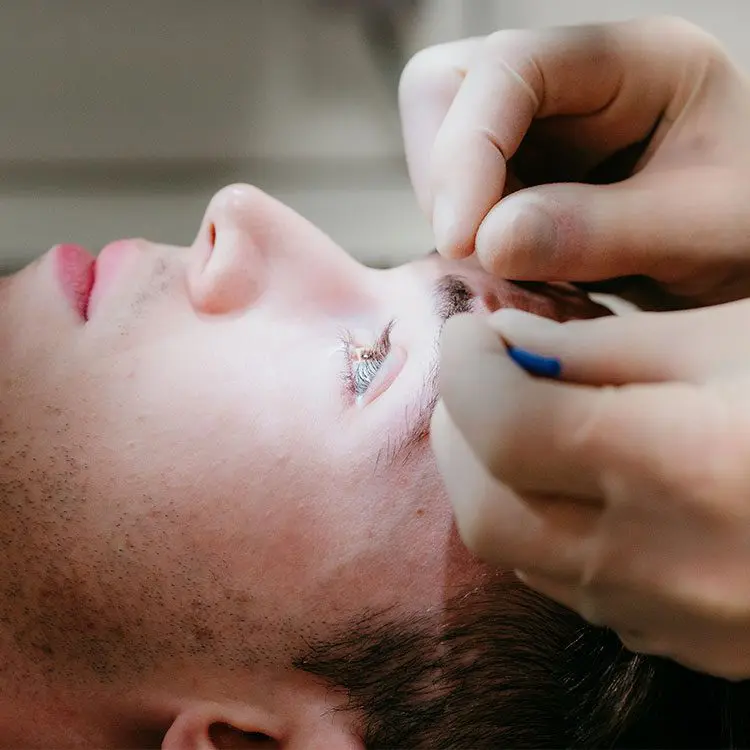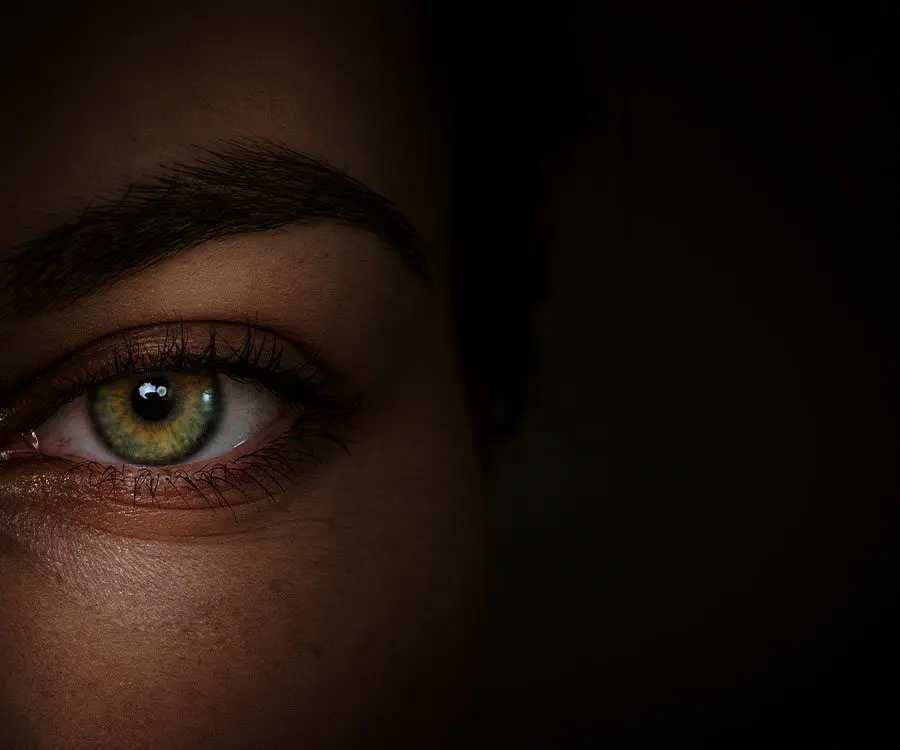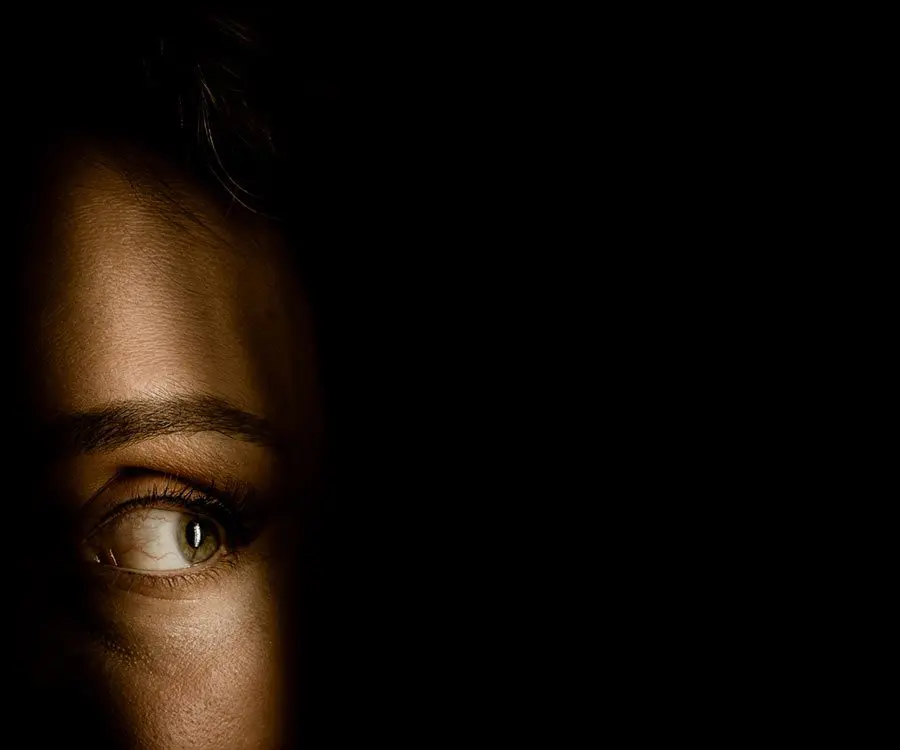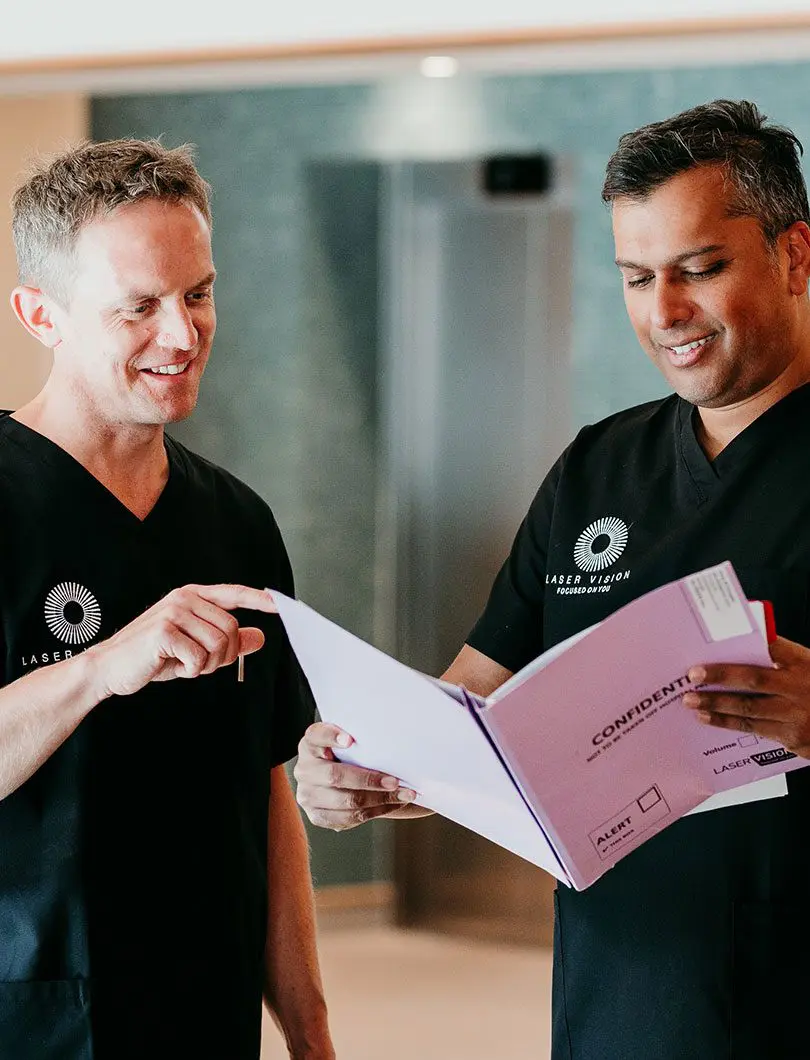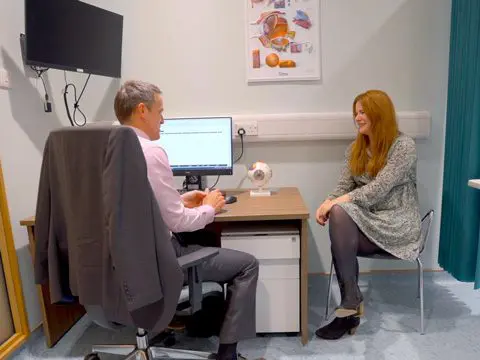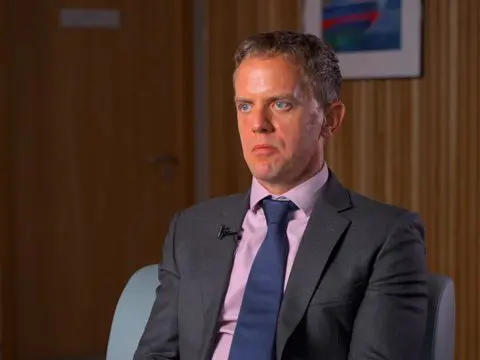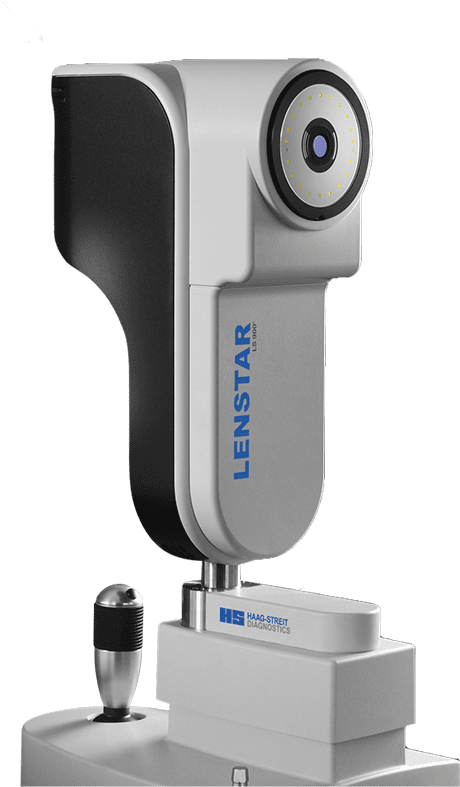- Laser Eye Surgery

LASIK EYE SURGERY

- Treatment

- Laser Eye Surgery
LASIK EYE SURGERY
LASIK eye surgery is the most popular type of laser eye surgery in the UK. Lasik is a safe and established method of treating common refractive errors such as eye conditions like myopia (short-sightedness), hyperopia (long-sightedness) and astigmatism (when the eye is shaped like a rugby ball instead of a football).
What is LASIK in Laser Vision Correction?
The principle of LASIK eye surgery is to use a specialist laser to precisely reshape the curvature of the cornea – the dome-shaped, clear window at the front of the eye.
Normally, images are clearly focussed on the retina at the back of the eye because the light rays are bent correctly to focus on the retinal surface.
In myopia – nearsightedness, hyperopia – farsightedness and astigmatism, light entering the eye is bent incorrectly and focused away from the retina which can cause blurred vision. Spectacles and contact lenses bend the light correctly to provide clear vision. Reshaping the profile of the cornea with laser surgery ensures that light is bent correctly onto the retina without the burden of spectacles or contact lenses.
Our specialist, independent NHS Consultant Eye Surgeons are dual-trained to the highest standard in cornea and refractive surgery. LASIK is considered to be one of the safest forms of refractive surgery, and it’s estimated that over 32 million LASIK procedures have been performed worldwide.
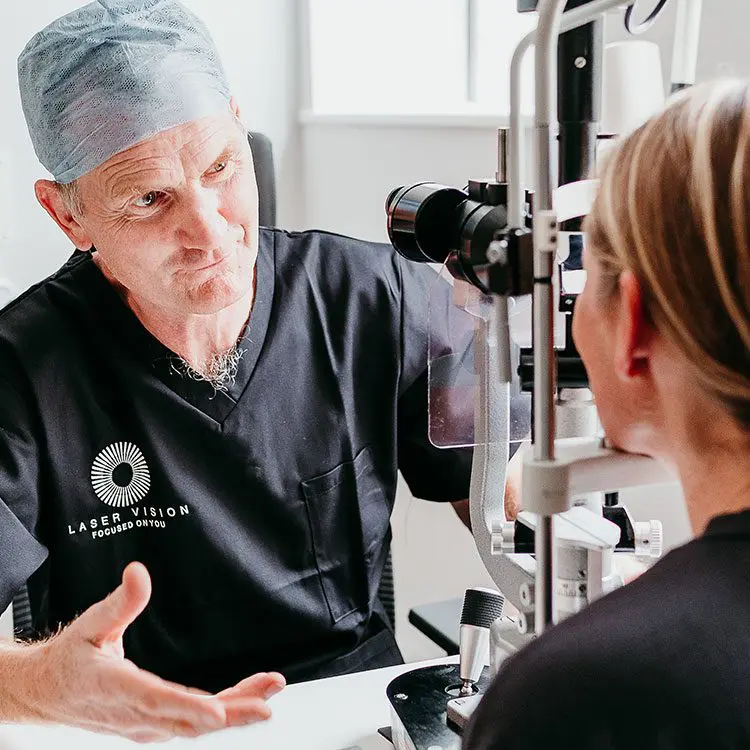
At Laser Vision we perform this laser eye procedure using the femtosecond laser, The Schwind Amaris 1050RS and The Ziemer Z8 lasers.
During the first step of LASIK, the femtosecond laser uses tiny, rapid pulses of laser to create the corneal flap – instead of using a metal blade. Each pulse of light passes through the top layers of the cornea and forms a microscopic bubble at a specific depth and position within the eye that is determined by our laser eye surgeons. The laser moves back and forth across the eye, creating a uniform layer of bubbles just beneath the corneal surface. Unlike mechanical instruments, femtosecond laser technology is uniquely able to program the dimensions of the flap based on what is best for the eye.
The Schwind Amaris 1050RS is one of the world’s highest-performance eye laser systems for refractive and therapeutic corneal surgery, bringing together the most advanced technology in existence. With its repetition rate of 1050 Hz and its unique 7D eye tracking, it offers unmatched speed, precision, and safety for laser eye surgery. The very fine 0.54 mm laser spot further enhances the precision and smooth corneal modelling of this device. The Ziemer Z8 laser is one of the latest and most advanced femtosecond laser technologies available, with an ability to create 3-dimensional flaps which are more stable and secure. The low energy, high repetition rate laser can create super-smooth flaps, resulting in extremely rapid recovery of vision.
At Laser Vision we perform this laser eye procedure using the femtosecond laser, The Schwind Amaris 1050RS and The Ziemer Z8 lasers.
During the first step of LASIK, the femtosecond laser uses tiny, rapid pulses of laser to create the corneal flap – instead of using a metal blade. Each pulse of light passes through the top layers of the cornea and forms a microscopic bubble at a specific depth and position within the eye that is determined by our laser eye surgeons. The laser moves back and forth across the eye, creating a uniform layer of bubbles just beneath the corneal surface. Unlike mechanical instruments, femtosecond laser technology is uniquely able to program the dimensions of the flap based on what is best for the eye.
The Schwind Amaris 1050RS is one of the world’s highest-performance eye laser systems for refractive and therapeutic corneal surgery, bringing together the most advanced technology in existence. With its repetition rate of 1050 Hz and its unique 7D eye tracking, it offers unmatched speed, precision, and safety for laser eye surgery. The very fine 0.54 mm laser spot further enhances the precision and smooth corneal modelling of this device. The Ziemer Z8 laser is one of the latest and most advanced femtosecond laser technologies available, with an ability to create 3-dimensional flaps which are more stable and secure. The low energy, high repetition rate laser can create super-smooth flaps, resulting in extremely rapid recovery of vision.


How is LASIK eye surgery performed
- 1.Local anaesthetic eye drops are applied to both eyes.
- 2.The femtosecond laser is used to create a thin flap on the surface of the cornea.
- 3.The flap is gently lifted.
- 4.The excimer laser is then used to reshape the cornea. An average 3 diopter treatment needs less than 6 seconds of laser application.
- 5.The flap is gently replaced and aligned back into its original position.
- 6.The flap will heal naturally and no stitches are required.
